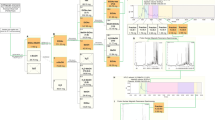Abstract
Marine organisms represent approximately half of the world’s biodiversity by virtue of the sea being an immense reservoir of bioactive molecules. Here, antimicrobial crude extract activities of different marine invertebrates from the Caribbean Sea were evaluated. One of the most active, crude extracts was that marine snail Cenchritis muricatus, it was capable of totally inhibiting the development of Staphylococcus aureus and also showed a growth inhibition of 95.9% in Escherichia coli. Aiming to isolate molecules that confirm antimicrobial activity, the crude extract was purified by reversed-phase HPLC C-18 chromatography. Thereafter, one of the obtained fractions preserved this antibacterial activity. Furthermore, SDS-PAGE analysis (15%) showed the presence of two proteins of molecular masses with approximately 10 and 15 kDa, respectively. The first 19 amino acids of both proteins were sequenced by using Edman degradation, yielding unidentified primary structures compared against sequences deposited at NCBI databank. This is the first report of antibacterial proteins isolated from the mollusk Cenchritis muricatus and these proteins could be used as antibiotic alternatives in the aquacultural industry, as well as in agricultural or biomedical research.



Similar content being viewed by others
References
Abtin A, Eckhart L, Mildner M, Gruber F, Schroder JM, Tschachler E (2008) Flagellin is the principal inducer of the antimicrobial peptide S100A7c (psoriasin) in human epidermal keratinocytes exposed to Escherichia coli. FASEB J 22(7):2168–2176
Andersen JH, Jenssen H, Sandvik K, Gutteberg TJ (2004) Anti-HSV activity of lactoferrin and lactoferricin is dependent on the presence of heparan sulphate at the cell surface. J Med Virol 74(2):262–271
Arias CA, Murray BE (2009) Antibiotic-resistant bugs in the 21st century—a clinical super-challenge. N Engl J Med 360(5):439–443
Barbosa PP, Del Sarto RP, Silva ON, Franco OL, Grossi-de-Sa MF (2011) Antibacterial peptides from plants: what they are and how they probably work. Biochem Res Int 2011:250349
Bartlett TC, Cuthbertson BJ, Shepard EF, Chapman RW, Gross PS, Warr GW (2002) Crustins, homologues of an 11.5-kDa antibacterial peptide, from two species of penaeid shrimp, Litopenaeus vannamei and Litopenaeus setiferus. Mar Biotechnol (NY) 4(3):278–293
Battison AL, Summerfield R, Patrzykat A (2008) Isolation and characterisation of two antimicrobial peptides from haemocytes of the American lobster Homarus americanus. Fish Shellfish Immunol 25(1–2):181–187
Brogden KA (2005) Antimicrobial peptides: pore formers or metabolic inhibitors in bacteria? Nat Rev Microbiol 3(3):238–250
Dubin A, Mak P, Dubin G, Rzychon M, Stec-Niemczyk J, Wladyka B, Maziarka K, Chmiel D (2005) New generation of peptide antibiotics. Acta Biochim Pol 52(3):633–638
Dziarski R, Gupta D (2006) Mammalian PGRPs: novel antibacterial proteins. Cell Microbiol 8(7):1059–1069
Fusetani N (2010) Antifungal peptides in marine invertebrates. ISJ 7:53–66
Galinier R, Roger E, Sautiere PE, Aumelas A, Banaigs B, Mitta G (2009) Halocyntin and papillosin, two new antimicrobial peptides isolated from hemocytes of the solitary tunicate Halocynthia papillosa. J Pept Sci 15(1):48–55
Gonzalez Y, Tanaka AS, Hirata IY, del Rivero MA, Oliva ML, Araujo MS, Chavez MA (2007) Purification and partial characterization of human neutrophil elastase inhibitors from the marine snail Cenchritis muricatus (Mollusca). Comp Biochem Physiol A Mol Integr Physiol 146(4):506–513
Hale JD, Hancock RE (2007) Alternative mechanisms of action of cationic antimicrobial peptides on bacteria. Expert Rev Anti Infect Ther 5(6):951–959
Hetru C, Bulet P (1997) Strategies for the isolation and characterization of antimicrobial peptides of invertebrates. Methods Mol Biol 78:35–49
Jenssen H, Hamill P, Hancock RE (2006) Peptide antimicrobial agents. Clin Microbiol Rev 19(3):491–511
Laemmli UK (1970) Cleavage of structural proteins during the assembly of the head of bacteriophage T4. Nature 227:680–685
Lee IH, Cho Y, Lehrer RI (1997) Styelins, broad-spectrum antimicrobial peptides from the solitary tunicate, Styela clava. Comp Biochem Physiol B Biochem Mol Biol 118(3):515–521
Lopez R, Silventoinen V, Robinson S, Kibria A, Gish W (2003) WU-Blast2 server at the European bioinformatics institute. Nucleic Acids Res 31(13):3795–3798
Molinski TF, Dalisay DS, Lievens SL, Saludes JP (2009) Drug development from marine natural products. Nat Rev Drug Disc 8:69–85
Mor A (2009) Multifunctional host defense peptides: antiparasitic activities. FEBS J 276(22):6474–6482
Otero-Gonzalez AJ, Magalhaes BS, Garcia-Villarino M, Lopez-Abarrategui C, Sousa DA, Dias SC, Franco OL (2010) Antimicrobial peptides from marine invertebrates as a new frontier for microbial infection control. FASEB J 24(5):1320–1334
Peschel A, Sahl HG (2006) The co-evolution of host cationic antimicrobial peptides and microbial resistance. Nat Rev Microbiol 4(7):529–536
Prapavorarat A, Pongsomboon S, Tassanakajon A (2010) Identification of genes expressed in response to yellow head virus infection in the black tiger shrimp, Penaeus monodon, by suppression subtractive hybridization. Dev Comp Immunol 34(6):611–617
Steinstraesser L, Kraneburg UM, Hirsch T, Kesting M, Steinau HU, Jacobsen F, Al-Benna S (2009) Host defense peptides as effector molecules of the innate immune response: a sledgehammer for drug resistance? Int J Mol Sci 10(9):3951–3970
Tassanakajon A, Amparyup P, Somboonwiwat K, Supungul P (2010) Cationic antimicrobial peptides in penaeid shrimp. Mar Biotechnol (NY) 12(5):487–505
Yeung AT, Gellatly SL, Hancock RE (2011) Multifunctional cationic host defence peptides and their clinical applications. Cell Mol Life Sci 68(13):2161–2176
Yount NY, Bayer AS, Xiong YQ, Yeaman MR (2006) Advances in antimicrobial peptide immunobiology. Biopolymers 84(5):435–458
Yue F, Pan L, Miao J, Zhang L, Li J (2010) Molecular cloning, characterization and mRNA expression of two antibacterial peptides: crustin and anti-lipopolysaccharide factor in swimming crab Portunus trituberculatus. Comp Biochem Physiol B Biochem Mol Biol 156(2):77–85
Zhao J, Song L, Li C, Ni D, Wu L, Zhu L, Wang H, Xu W (2007) Molecular cloning, expression of a big defensin gene from bay scallop Argopecten irradians and the antimicrobial activity of its recombinant protein. Mol Immunol 44(4):360–368
Acknowledgment
This study was supported by CAPES, CNPq, FAPDF, and UCB.
Author information
Authors and Affiliations
Corresponding author
Rights and permissions
About this article
Cite this article
López-Abarrategui, C., Alba, A., Lima, L.A. et al. Screening of Antimicrobials from Caribbean Sea Animals and Isolation of Bactericidal Proteins from the Littoral Mollusk Cenchritis muricatus . Curr Microbiol 64, 501–505 (2012). https://doi.org/10.1007/s00284-012-0096-5
Received:
Accepted:
Published:
Issue Date:
DOI: https://doi.org/10.1007/s00284-012-0096-5




